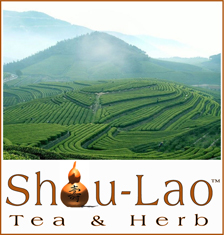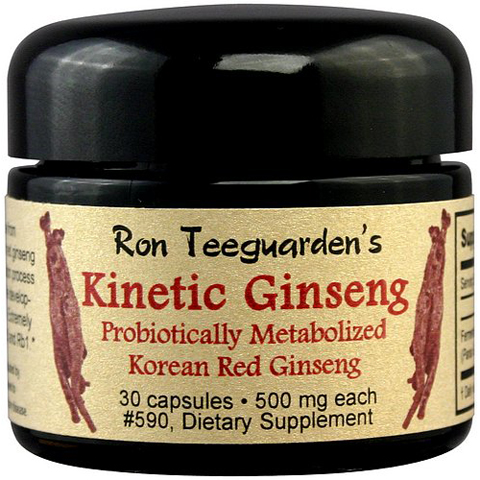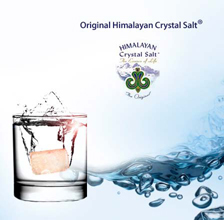Kinetic Ginseng - 30 Caps
Fermented Korean Red Ginseng
The dominant active components of ginseng are saponins (ginsenosides). Orally administered Ginseng saponins are not decomposed by digestive enzymes, so they pass through the stomach into the intestines intact. Saponins are hydrolyzed by intestinal bacteria and then the “metabolites” are absorbed through the intestinal wall into the blood stream. Individual difference of Ginseng efficacy is due to difference in hydrolyzing ability of intestinal bacteria. Fermented Korean red Ginseng (Kinetic Ginseng) is free from saponin-hydrolyzing ability – it has already been pre-hydrolyzed by fermenting with the appropriate probiotics bacteria. As a result, everyone consuming Kinetic Ginseng can expect equal efficacy from the Ginseng.
The organism used to ferment the Red Ginseng is known as Hideo Hasegawa A22. It was originally developed in Japan. It is very similar to Prevotella oris strains that were originally isolated and identified as a major bacterial species possessing the potential to hydrolyze Ginseng.
Kinetic Ginseng is extremely efficacious. Research by major institutions in Japan and Korea have found that Kinetic Ginseng is a tonic for restoring the body’s natural balance and for maintaining homeostasis. The Asian researchers believe that Kinetic Ginseng:
- Enhances body strength
- Aids in recovering physical balance
- has potential anticancer activity
- has potential anti-diabetic effects
- improves cognitive power
- enhances physical capacities
Though none of these effects have been verified to the satisfaction of the FDA, they nevertheless provide an indication as to how Asian scientists are thinking about fermented Korean Ginseng.
Ginseng is frequently used as an orally taken tonic in traditional herbalism of China, Korea, Japan and other Asian countries. It is also widely consumed in the United States as a tonic. It has been used as a tonic for restoring the body’s natural supply and balance of Qi, with the result of enhancing body strength, recovering physical balance, increasing mental efficiency and stimulating metabolic, respiratory and immunological functions. Modern western science now accepts Ginseng as an adaptogen, a modern term which essentially means the same thing: restoring the body’s natural balance and ability to withstand stress.
The Yin and Yang of Ginseng – How Ginseng Is an Adaptogen
Ginseng contains several unique active ingredients that are not found in any other plants. The most important substances with bioactive properties are called ginsenosides. Chemically, several ginsenosides exist and are classified in different groups, all of which contain an “R” in their names. Each ginsenoside has its own special properties and effects. There are two dominant types of ginsenosides: Rg (Triol type) and Rb (Diol type).
The interplay of these two ginsenoside types creates the harmonic balance between Yin (passivity, darkness, slowness) and Yang (activity, light, quickness).
- Diol type saponins have the ability to calm the human organism at times of stress and agitation. They are Yin.
- Triol type saponins, on the other hand, increase performance, speed up reactions and have a positive effect in case of physical exhaustion and illness. They are Yang.
As a result of these two interacting, but opposing effects, Ginseng tends to regulate functions in the body. It is therefore neither stimulant nor sedative – it is both, or either, depending upon the needs of the body and mind under different circumstances. This “bi-directional” action makes Ginseng an adaptogen, a substance that automatically helps restore and maintain balance in the body and mind, and reduces the stress response of both the body and psyche.
How Kinetic Ginseng Differs from ALL Other Ginsengs on the Market
The active components of Ginseng, as described above, are ginsenosides. It is now known that these ginsenosides are hydrolyzed by intestinal bacteria and then the metabolites are absorbed into the body. Orally administered ginsenosides are virtually unaffected by either gastric juice or liver enzymes, and the absorption rate of ginsenosides through the intestines is very low. Therefore, an individual can expect maximum Ginseng effectiveness only when specific intestinal bacteria exist in the body which hydrolyze the ginsenosides, enabling the body to use the Ginseng. Researchers have proven that Rb and Rg ginsenosides are poorly absorbed from the intestines but after being metabolized by intestinal bacteria, the bacterial metabolites are absorbed from the intestines.
Fully mature Korean Ginseng that has been steamed to convert it to Red Ginseng, contains the most ginsenosides of all commercially produced Ginseng. Korean Red Ginseng contains more than 30 known ginsenosides.
- 18 of the ginsenosides in Korean Red Ginseng are of the Diol Type and are thus Yin in nature.
- 11 of the ginsenosides in Korean Red Ginseng are of the Triol Type and are thus Yang in nature.
Red Ginseng not only contains Rg and Rb ginsenosides, but also other forms, known as Re and Rc, as well as others. These too require bacterial metabolizing to make them absorbable. These are also metabolized in the process of making Kinetic Ginseng, making all the ginsenosides in Ginseng bioavailable.
Note: inexpensive Ginseng products, such as might be purchased at most health food stores and convenience stores, are made from less mature roots (immature, by Dragon Herbs standards) and have an awkward balance of ginsenosides that makes the Triol Type (Yang) ginsenosides the dominant component. This is why this cheaper Ginseng may cause headaches and raise blood pressure in some individuals. We highly recommend NEVER consuming this cheaper grade of Ginseng product. The balance is wrong and unhealthy.
The ginsenoside-hydrolyzing (metabolizing) ability of intestinal bacteria varies from person to person. These differences exist, in part, based on a person’s physical condition and the varying patterns of intestinal microorganisms that exist in a human body. Antibiotics kill off the precise microorganisms that metabolize Ginseng. Anyone who has taken an antibiotic may be lacking partially or entirely in this microorganism. Therefore, many modern people cannot get the full benefit of Ginseng. And that’s where Kinetic Ginseng comes in.
Kinetic Ginseng is equally effective in ALL people, regardless of their ability to metabolize ginsenosides. Kinetic Ginseng is fermented by the microorganism that metabolizes Ginseng during the manufacturing process. This VASTLY improves the effectiveness of this Red Ginseng over any other Ginseng product in the market simply because of the improved assimilation of the ginsenoside metabolites that are actually functional in the human body.
Other Benefits of Kinetic Ginseng
While the ginsenosides play an extremely important role in the health related actions of Ginseng, several other components, particularly some types of polysaccharides, work together with the ginsenosides and ginsenoside metabolites to provide optimal effectiveness. Kinetic Ginseng uses the entire Ginseng root. Using the entire Ginseng root provides additional vitamins, minerals and trace elements that possess important benefits to the human body.
Components of Kinetic Ginseng and Associated Pharmacological Activity
Saponins
- sugar regulating effect (anti-diabetic effects)
- anti-inflammatory effects
- immune regulating effects
- anti-stress effects
- anti-fatigue effects
Polysaccharides
- sugar regulating effect
- immunostimulant
Lignins
- liver protective effects
Glycoproteins
- radioprotective activity
Acidic peptides
- insulin-like activity
- antidiabetic effects
- lipolysis activity
Polyacetylene
- anti-lipid peroxidation action
- anti-platelet action
Ginseng contains saccharides (mono-, di-, tri- and poly-), proteins, peptides, amino acids, nucleic acids, alkaloids, glycosides, lipids, fatty acids, essential oils, phytosterols, organic acids, phenolics, polyacetylenes, terpenes, water soluble vitamins, crude fibers, pectins, minerals.
All These Components Are Available In Kinetic Ginseng
Anti-Diabetic Effects of Kinetic Ginseng
It has been well established by researchers around the world that Ginseng has an anti-diabetic effect* based upon its ability to help regulate blood sugar, and specifically to reduce elevated serum glucose levels in those with elevated serum glucose levels. It is not used to cure diabetes, but it can be useful and is very safe for diabetics to consume, so long as it is monitored by a physician. (Always consult your physician before using this or any supplement if you are receiving medical treatment for a health condition or if you have any questions). Kinetic Ginseng appears to have a potent ability to reduce serum glucose levels in diabetics. Again, use only under the supervision of a physician.
Role Of Human Intestinal Prevotella Oris In Hydrolyzing Ginseng Saponins
Planta Med. 1997 Oct;63(5):436-40. Links
Itto Institute of Life Science Research, Happy World Inc., Tokyo, Japan.
The potential of intestinal bacteria to hydrolyze ginsenoside Rb1 to 20-O-beta-D-glucopyranosyl-20(S)-protopanaxadiol (I) was found in 79% of the fecal specimens from 58 human subjects whose age ranged from 1 to 64 years. Following a ginsenoside-Rb1-hydrolyzing activity assay, Prevotella oris strains were then isolated as a major bacterial species possessing the potential. All the intestinal isolates converted ginsenosides Rb1 and Rd to I, ginsenoside Rb2 to 20-O-[alpha-L-arabinopyranosyl(1-->6)-beta-D-glucopyranosyl]-20(S) -protopanaxadiol (II), and ginsenoside Rc to 20-O-[alpha-L-arabinofuranosyl(1-->6)-beta-D-glucopyranosyl]-20(S)- protopanaxadiol (III) like fecal microflora, but did not attack ginsenosides Re or Rg1 (protopanaxatriol-type). The isolates were susceptible to colimycin (MIC, 3.13 micrograms/ml) and then the treatment of specific pathogen free mice with colimycin (20 mg/kg/day) decreased intestinal bacterial Rb1-hydrolyzing potential from 22.1 +/- 1.2% to 4.7 +/- 2.7%, while the decreased potential was restored to 30.7 +/- 3.7% by the inoculation with P. oris isolates. These results suggest that the metabolism of protopanaxadiol saponins to metabolites I-III in the intestines seems most partly due to intestinal P. oris. In addition, the fact that neither intact ginsenoside Rb1 nor its middle metabolic derivatives but only the final metabolite I was detected at 1.0-7.3 micrograms/ml in blood after oral administration of mice with ginsenoside Rb1 (125 mg/kg) allows us to speculate that metabolites I-III are the most likely forms of protopanaxadiol saponins absorbed from the intestines.
PMID: 9342949 [PubMed - indexed for MEDLINE]
Anti-proliferation And Apoptosis Induced By A Novel Intestinal Metabolite Of Ginseng Saponin In Human Hepatocellular Carcinoma Cells
Ming YL, Song G, Chen LH, Zheng ZZ, Chen ZY, Ouyang GL, Tong QX.
The Key Laboratory of Ministry of Education for Cell Biology and Tumor Cell Engineering, School of Life Sciences, Xiamen University, Xiamen 361005, PR China.
20-O-(beta-D-glucopyranosyl)-20(S)-protopanaxadiol (IH-901), a novel intestinal bacterial metabolite of ginseng protopanaxadiol saponins, is reported to induce apoptosis in a variety of cancer cells. We purified the compound and measured its in vitro anti-tumor activity. IH-901 inhibited cell growth of human hepatocellular carcinoma SMMC7721 cells in a dose- and time-dependent manner. We also found that IH-901 induced apoptotic cell death concurrent with cell cycle arrest in G0-G1 phase in SMMC7721 cells. At the molecular level, we show that IH-901 upregulates cytochrome c, p53, and Bax expression, and downregulates pro-caspase-3 and pro-caspase-9 expressions in a dose-dependent manner, while the levels of Bcl-2 and Bcl-X(L) were unchanged in IH-901-treated SMMC7721 cells. These results provide significant insight into the anticarcinogenic action of IH-901.
Cell Biol Int. 2007 Oct;31(10):1265-73. Epub 2007 May 21.
PMID: 17587608 [PubMed - indexed for MEDLINE]
Traditional Function: Adaptogenic, builds Qi, regulates blood sugar.
Who Can Use It? Anyone
Concentration: Whole Powdered Ginseng
Specifications: 30 capsules 500 mg each
Precautions: Use as directed. If you have a pre-existing health condition, consult your physician before using this or any dietary supplement.
Ingredients: Korean Red Ginseng (fermented).
Usage: 1 – 6 capsules a day as desired.





